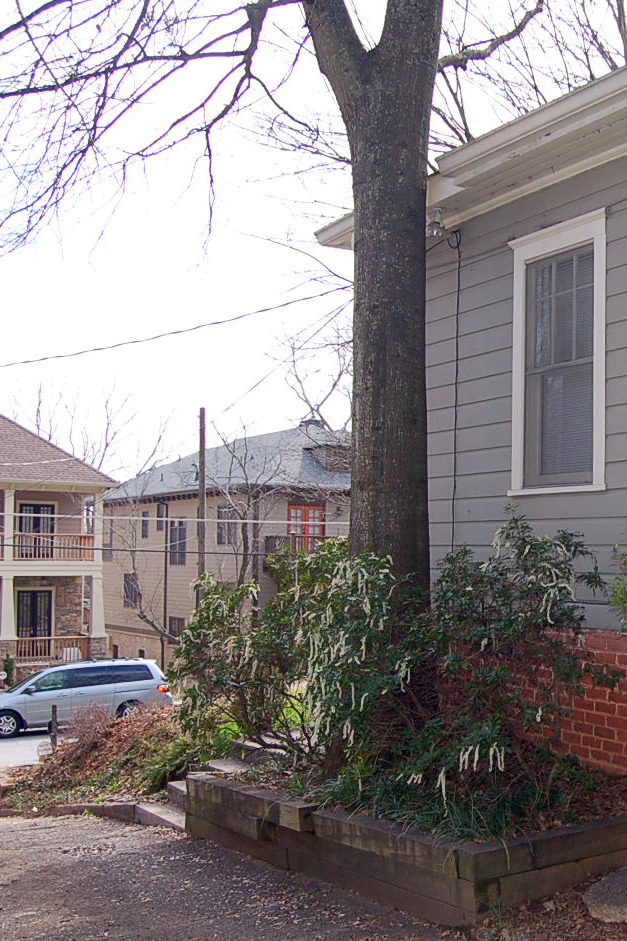Silvicultural Permits
Permits to remove trees for forest improvement also must be approved by the arborist division. They have the same posting and tree protection requirements as other permits, but may or may not be required to meet the replacement and recompense provisions of the Tree Protection Ordinance. [Sec. 158-101(c)(3)]
Location to House Permits
 A tree within 5 feet of the foundation of a single-family residence or a duplex is usually approved for a permit as a “DDH” tree if it meets several additional criteria. [Sec. 158-101(i)(1-12)] However, keep in mind that a tree near a house is not necessarily a threat to the home. The gutter or edge of the roofline can be notched to accomodate an expanding trunk as shown in this photo.
A tree within 5 feet of the foundation of a single-family residence or a duplex is usually approved for a permit as a “DDH” tree if it meets several additional criteria. [Sec. 158-101(i)(1-12)] However, keep in mind that a tree near a house is not necessarily a threat to the home. The gutter or edge of the roofline can be notched to accomodate an expanding trunk as shown in this photo.
However, a tree of this species should have never been planted this close to the house and will probably have to be removed when the tree begins to expand into the house itself. But, by notching the gutter, the owners of this home can perhaps enjoy the shade this tree provides for another decade or more.
Nuisance Tree
A dead, dying, diseased or hazardous tree on private property may be declared a nuisance and its removal forced if it threatens public streets or public property. [Sec. 158-110(1)]
Click here to learn more about the City of Atlanta's enforcement of the nuisance tree ordinance. If you have a nuisance tree that you want removed, be prepared to insist that the City follow through with a court order for removal if the property owner is non-responsive to the city arborist's request to remove the nuisance tree.
Undesirable Species
A permit to remove certain healthy trees – Mimosa, Ailanthus, White mulberry, Paper mulberry, Chinaberry, Paulownia, Cherry laurel, Bradford pear and Leyland cypress – may be granted without recompense if the tree in question is less than 12 inches DBH and meets certain other criteria. [Sec. 158-102(b)]
Page 2 of 2
